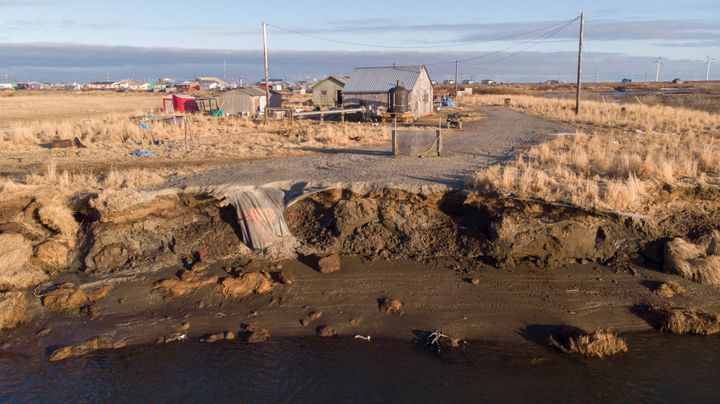
The Biden administration on Thursday awarded more than $120 million to dozens of Native American and Alaska Native tribes to prepare for and adapt to the mounting impacts of climate change, including sea level rise, worsening droughts and wildfires and food security.
The investments are part of a broader administrative effort to rectify decades of “significant and systematic underfunding for tribal communities,” Interior Secretary Deb Haaland told reporters on a press call. This disinvestment in Indigenous communities, along with Native Americans’ forced displacement from their historic lands, has left these groups particularly vulnerable to the dangers of a warming climate.
“As I’ve visited communities all across the country — from the Alaska village of Utqiagvik, to the Quinault Indian Nation in Washington, to the Chitimacha Tribe of Louisiana — I’ve seen firsthand how pressing the climate crisis is for Indigenous peoples and the urgency with which we must move to honor our obligations to tribal nations,” Haaland said. “As these communities face the increasing threat of rising seas, coastal erosion, storm surges, raging wildfires and devastation from other extreme weather events, our focus must be on bolstering climate resilience.”
The money will be distributed to 102 tribes and 8 tribal organizations, funding a total of 146 individual projects. It is the largest amount of annual funding ever awarded through the Bureau of Indian Affairs’ Tribal Climate Resilience Annual Awards Program, which first launched in 2011.
Individual awards range from more than $4 million down to $89,000 and fund everything from relocation efforts and erosion prevention to water infrastructure and habitat restoration projects.
Haaland, the first Native American person to serve as a Cabinet secretary, said the funding will “help build lasting and generational change that tribal communities need to stay resilient.”
A total 166 tribes and tribal organizations applied for funding through the program, according to a senior Biden administration official. The cash comes from the 2021 bipartisan infrastructure law, the 2022 Inflation Reduction Act and other annual funding in the 2023 fiscal year budget. The administration said it
Tom Perez, the White House director of intergovernmental affairs, told reporters that President Joe Biden’s policies have “delivered the most investment Indian Country has seen from the federal government — ever.”
“As we all know, the most severe consequences of climate change fall disproportionately on communities that are least able to prepare for and recover from them, including tribal nations,” Perez said. “Our administration is making unprecedented investments to ensure tribal communities have the resources to develop effective, community driven climate resilient strategies.”
Disclaimer: The copyright of this article belongs to the original author. Reposting this article is solely for the purpose of information dissemination and does not constitute any investment advice. If there is any infringement, please contact us immediately. We will make corrections or deletions as necessary. Thank you.
